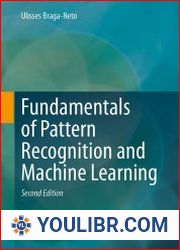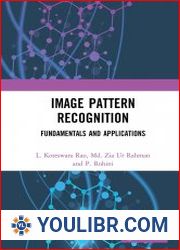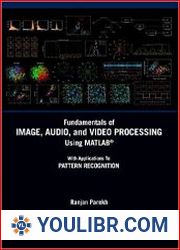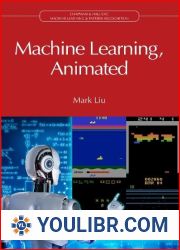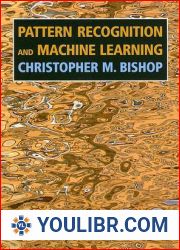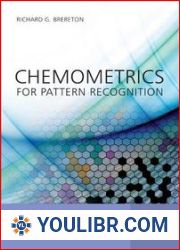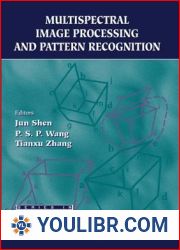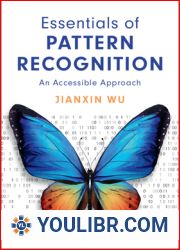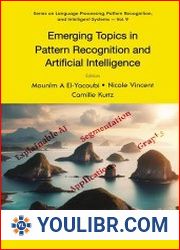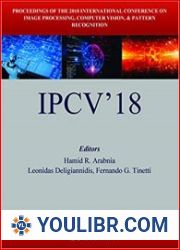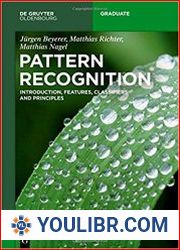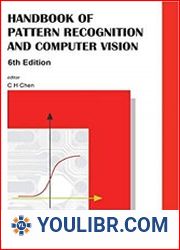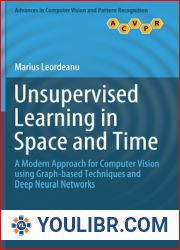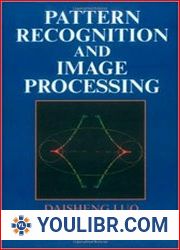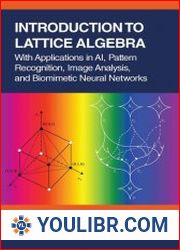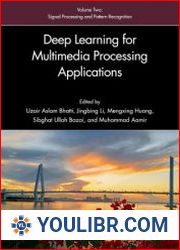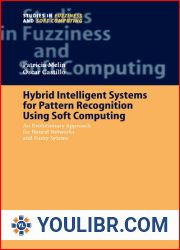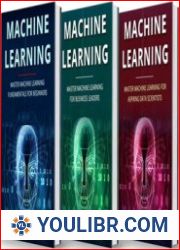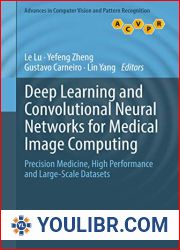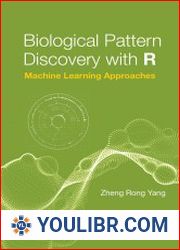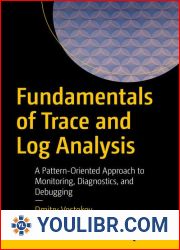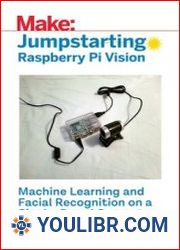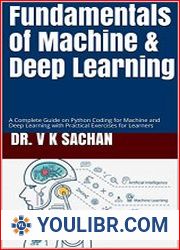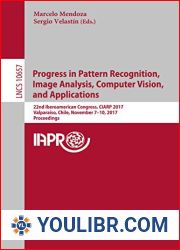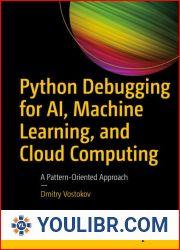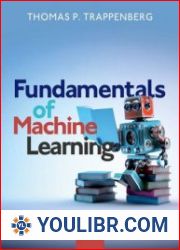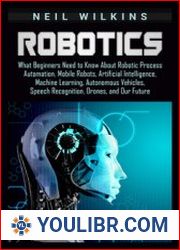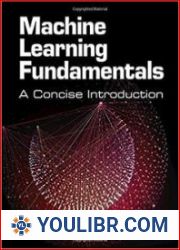
BOOKS - Fundamentals of Pattern Recognition and Machine Learning, 2nd Edition

Fundamentals of Pattern Recognition and Machine Learning, 2nd Edition
Author: Ulisses Braga-Neto
Year: 2024
Format: PDF
File size: 14.7 MB
Language: ENG

Year: 2024
Format: PDF
File size: 14.7 MB
Language: ENG

Fundamentals of Pattern Recognition and Machine Learning, 2nd Edition: A Key to Understanding Technological Evolution and Survival As technology continues to advance at an unprecedented pace, it is essential to understand the fundamentals of pattern recognition and machine learning to stay ahead of the curve. This comprehensive guide provides a thorough introduction to the tools commonly used in these fields, including classification, dimensionality reduction, regression, and clustering, as well as recent popular topics such as deep neural networks and Gaussian process regression. The second edition has been thoroughly revised to include a new chapter on physics-informed machine learning and additional material on deep neural networks, making it an ideal resource for both graduate and advanced undergraduate students, as well as practitioners looking to expand their knowledge in the field. The book begins by covering the basics of pattern recognition, including image processing, feature extraction, and classification, before delving into the principles of machine learning, including supervised and unsupervised learning, linear and nonlinear regression, and neural networks. The author then explores more advanced topics, such as support vector machines, kernel methods, and clustering algorithms, providing a detailed understanding of the underlying principles and techniques.
Основы распознавания образов и машинного обучения, 2-е издание: Ключ к пониманию технологической эволюции и выживания Поскольку технология продолжает развиваться беспрецедентными темпами, важно понимать основы распознавания образов и машинного обучения, чтобы оставаться на опережение. Это всеобъемлющее руководство содержит подробное введение в инструменты, обычно используемые в этих областях, включая классификацию, уменьшение размерности, регрессию и кластеризацию, а также недавние популярные темы, такие как глубокие нейронные сети и гауссова регрессия процессов. Второе издание было тщательно переработано, чтобы включить новую главу о машинном обучении на основе физики и дополнительный материал о глубоких нейронных сетях, что делает его идеальным ресурсом как для аспирантов, так и для продвинутых студентов, а также для практиков, стремящихся расширить свои знания в этой области. Книга начинается с изучения основ распознавания образов, включая обработку изображений, извлечение признаков и классификацию, прежде чем углубиться в принципы машинного обучения, включая обучение с учителем и без учителя, линейную и нелинейную регрессию и нейронные сети. Затем автор исследует более продвинутые темы, такие как машины опорных векторов, методы ядра и алгоритмы кластеризации, предоставляя подробное понимание основных принципов и методов.
Bases de la reconnaissance des images et de l'apprentissage automatique, 2ème édition : La clé pour comprendre l'évolution technologique et la survie Alors que la technologie continue d'évoluer à un rythme sans précédent, il est important de comprendre les bases de la reconnaissance des images et de l'apprentissage automatique pour rester en avance. Ce guide complet fournit une introduction détaillée aux outils couramment utilisés dans ces domaines, y compris la classification, la réduction de la dimension, la régression et le regroupement, ainsi que des sujets populaires récents tels que les réseaux neuronaux profonds et la régression gaussienne des processus. La deuxième édition a été soigneusement remaniée pour inclure un nouveau chapitre sur l'apprentissage machine basé sur la physique et un matériel supplémentaire sur les réseaux neuronaux profonds, ce qui en fait une ressource idéale pour les étudiants des cycles supérieures et avancés, ainsi que pour les praticiens qui cherchent à élargir leurs connaissances dans ce domaine. livre commence par étudier les bases de la reconnaissance des images, y compris le traitement des images, l'extraction des traits et la classification, avant d'approfondir les principes de l'apprentissage automatique, y compris l'apprentissage avec et sans professeur, la régression linéaire et non linéaire et les réseaux neuronaux. L'auteur explore ensuite des sujets plus avancés tels que les machines vectorielles de référence, les méthodes de noyau et les algorithmes de clustering, en fournissant une compréhension détaillée des principes et des méthodes de base.
Fundamentos del reconocimiento de imágenes y el aprendizaje automático, 2ª edición: Clave para comprender la evolución tecnológica y la supervivencia A medida que la tecnología continúa evolucionando a un ritmo sin precedentes, es importante comprender los fundamentos del reconocimiento de imágenes y el aprendizaje automático para mantenerse a la vanguardia. Esta guía integral contiene una introducción detallada a las herramientas utilizadas comúnmente en estas áreas, incluyendo clasificación, reducción de dimensión, regresión y clusterización, así como temas populares recientes como redes neuronales profundas y regresión de procesos gaussianos. La segunda edición ha sido cuidadosamente rediseñada para incluir un nuevo capítulo sobre el aprendizaje automático basado en la física y material adicional sobre redes neuronales profundas, lo que lo convierte en un recurso ideal tanto para estudiantes de posgrado como avanzados, así como para practicantes que buscan ampliar sus conocimientos en este campo. libro comienza estudiando los fundamentos del reconocimiento de imágenes, incluyendo el procesamiento de imágenes, la extracción de rasgos y la clasificación antes de profundizar en los principios del aprendizaje automático, incluyendo el aprendizaje con y sin profesor, la regresión lineal y no lineal y las redes neuronales. A continuación, el autor explora temas más avanzados, como las máquinas de vectores de referencia, las técnicas de núcleo y los algoritmos de agrupamiento, proporcionando una comprensión detallada de los principios y métodos básicos.
Grundlagen der Mustererkennung und des maschinellen rnens, 2. Auflage: Der Schlüssel zum Verständnis der technologischen Evolution und des Überlebens Da sich die Technologie in einem beispiellosen Tempo weiterentwickelt, ist es wichtig, die Grundlagen der Mustererkennung und des maschinellen rnens zu verstehen, um der Zeit voraus zu bleiben. Dieser umfassende itfaden enthält eine detaillierte Einführung in die in diesen Bereichen häufig verwendeten Werkzeuge, einschließlich Klassifizierung, Dimensionsreduktion, Regression und Clusterbildung, sowie aktuelle populäre Themen wie tiefe neuronale Netzwerke und gaußsche Regression von Prozessen. Die zweite Ausgabe wurde sorgfältig überarbeitet, um ein neues Kapitel über physikbasiertes maschinelles rnen und zusätzliches Material über tiefe neuronale Netzwerke aufzunehmen, was sie zu einer idealen Ressource für Doktoranden und fortgeschrittene Studenten sowie für Praktiker macht, die ihr Wissen in diesem Bereich erweitern möchten. Das Buch beginnt mit dem Erlernen der Grundlagen der Mustererkennung, einschließlich Bildverarbeitung, Merkmalsextraktion und Klassifizierung, bevor es tiefer in die Prinzipien des maschinellen rnens eintaucht, einschließlich des rnens mit und ohne hrer, linearer und nichtlinearer Regression und neuronaler Netzwerke. Der Autor untersucht dann weiter fortgeschrittene Themen wie Support-Vector-Maschinen, Kernel-Methoden und Clustering-Algorithmen und bietet detaillierte Einblicke in die grundlegenden Prinzipien und Methoden.
''
Örüntü Tanıma ve Makine Öğreniminin Temelleri, 2. Baskı: Teknolojik Evrimi ve Hayatta Kalmayı Anlamanın Anahtarı Teknoloji benzeri görülmemiş bir hızda ilerlemeye devam ederken, eğrinin önünde kalmak için örüntü tanıma ve makine öğreniminin temellerini anlamak önemlidir. Bu kapsamlı kılavuz, sınıflandırma, boyutsallık azaltma, regresyon ve kümeleme gibi bu alanlarda yaygın olarak kullanılan araçların yanı sıra derin sinir ağları ve Gauss süreci regresyonu gibi son popüler konulara ayrıntılı bir giriş sunmaktadır. İkinci baskı, fizik tabanlı makine öğrenimi ve derin sinir ağları üzerine ek materyaller üzerine yeni bir bölüm içerecek şekilde kapsamlı bir şekilde revize edilmiştir, bu da hem lisansüstü hem de ileri düzey öğrenciler için ve aynı zamanda alandaki bilgilerini genişletmek isteyen uygulayıcılar için ideal bir kaynaktır. Kitap, görüntü işleme, özellik çıkarma ve sınıflandırma dahil olmak üzere desen tanıma temellerini keşfederek, denetimli ve denetimsiz öğrenme, doğrusal ve doğrusal olmayan regresyon ve sinir ağları dahil olmak üzere makine öğrenme ilkelerine girmeden önce başlar. Yazar daha sonra destek vektör makineleri, çekirdek yöntemleri ve kümeleme algoritmaları gibi daha ileri konuları araştırarak temel ilke ve yöntemlerin ayrıntılı bir şekilde anlaşılmasını sağlar.
أساسيات التعرف على الأنماط والتعلم الآلي، الإصدار الثاني: مفتاح فهم التطور التكنولوجي والبقاء على قيد الحياة مع استمرار التكنولوجيا في التقدم بوتيرة غير مسبوقة، من المهم فهم أساسيات التعرف على الأنماط والتعلم الآلي للبقاء في صدارة المنحنى. يقدم هذا الدليل الشامل مقدمة مفصلة للأدوات المستخدمة بشكل شائع في هذه المجالات، بما في ذلك التصنيف وتقليل الأبعاد والانحدار والتكتل، بالإضافة إلى الموضوعات الشائعة الحديثة مثل الشبكات العصبية العميقة وانحدار العملية الغاوسية. تمت مراجعة الإصدار الثاني على نطاق واسع ليشمل فصلاً جديدًا عن التعلم الآلي القائم على الفيزياء ومواد إضافية على الشبكات العصبية العميقة، مما يجعله مصدرًا مثاليًا لكل من الطلاب الخريجين والمتقدمين، وكذلك الممارسين الذين يتطلعون إلى توسيع معرفتهم في هذا المجال. يبدأ الكتاب باستكشاف أساسيات التعرف على الأنماط، بما في ذلك معالجة الصور واستخراج الميزات والتصنيف، قبل الخوض في مبادئ التعلم الآلي، بما في ذلك التعلم الخاضع للإشراف وغير الخاضع للإشراف، والانحدار الخطي وغير الخطي، والشبكات العصبية. ثم يستكشف المؤلف موضوعات أكثر تقدمًا مثل آلات ناقلات الدعم وطرق النواة وخوارزميات التجميع، مما يوفر فهمًا مفصلاً للمبادئ والطرق الأساسية.







